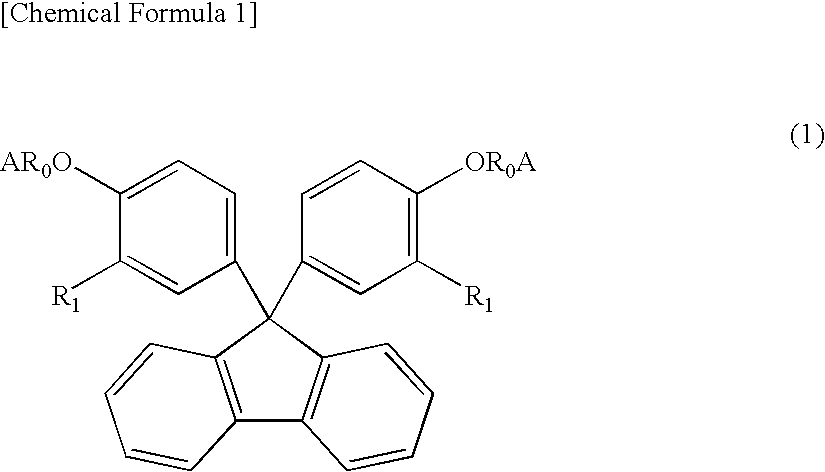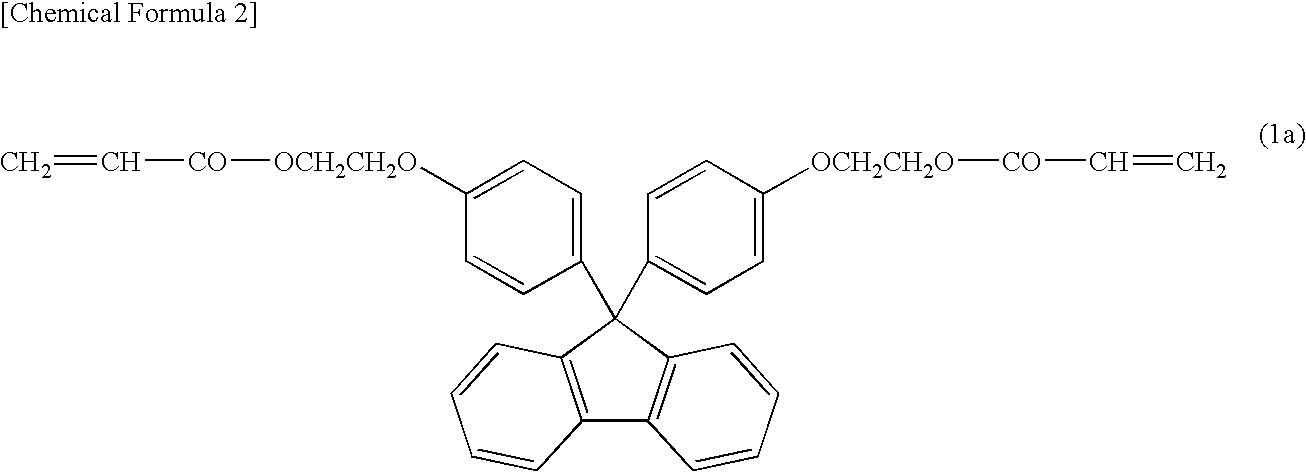Curable Resin Composition
a technology of resin composition and cure resin, which is applied in the direction of organic chemistry, coating, semiconductor devices, etc., to achieve the effect of excellent handling, no limit on the pot life, and easy cur
- Summary
- Abstract
- Description
- Claims
- Application Information
AI Technical Summary
Benefits of technology
Problems solved by technology
Method used
Image
Examples
example 1
(1) Preparation of Curable Resin Composition
[0058]Powder of the cured product of N-vinylcarbazole (Tokyo Chemical Industry Co., Ltd., refractive index: 1.68) was dissolved in 2-(2-acryloxyethoxy)biphenyl (TOAGOSEI CO., LTD., TO1463, refractive index: 1.5785, viscosity 125 mPa) in a ratio shown in Table 1. Furthermore, 1 part by weight of a photoinitiator (Ciba Specialty Chemicals, D-1173) was added to the mixture and dispersed uniformly by means of a planetary mixer, whereby a curable resin composition was obtained.
(2) Production of Cured Product Sheet
[0059]The curable resin composition obtained in (1) was sandwiched between two mold-releasing films composed of PET and was irradiated with ultraviolet rays (1J) using a mercury lamp, whereby a sheet of the cured product having a thickness of 0.5 mm was obtained.
(3) Evaluation
[0060]The above curable resin composition and the above sheet of the cured product were evaluated as follows. The results are shown in Table 1.
(3-1) Viscosity
[006...
PUM
| Property | Measurement | Unit |
|---|---|---|
| refractive index | aaaaa | aaaaa |
| refractive index | aaaaa | aaaaa |
| refractive index | aaaaa | aaaaa |
Abstract
Description
Claims
Application Information
 Login to View More
Login to View More - R&D
- Intellectual Property
- Life Sciences
- Materials
- Tech Scout
- Unparalleled Data Quality
- Higher Quality Content
- 60% Fewer Hallucinations
Browse by: Latest US Patents, China's latest patents, Technical Efficacy Thesaurus, Application Domain, Technology Topic, Popular Technical Reports.
© 2025 PatSnap. All rights reserved.Legal|Privacy policy|Modern Slavery Act Transparency Statement|Sitemap|About US| Contact US: help@patsnap.com



